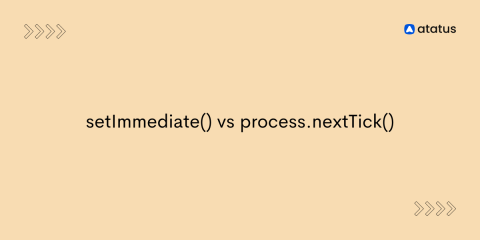Understanding setImmediate() vs process.nextTick() in Node.js
Node.js is a powerful runtime environment that allows you to handle asynchronous I/O operations efficiently using its event-driven architecture. Asynchronous operations in Node.js rely heavily on the event loop, and understanding how certain functions like process.nextTick() and setImmediate() interact with the event loop is essential for building fast, responsive applications.











